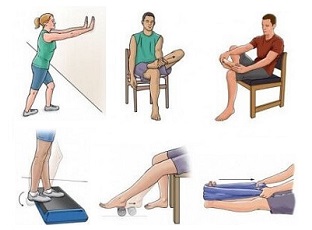- Home
- Foot Pain Symptoms
- Foot Pain Walking
Foot Pain When Walking
Written By: Chloe Wilson BSc(Hons) Physiotherapy
Reviewed By: FPE Medical Review Board
Foot pain when walking is a common issue which can significantly affect your daily activities and overall quality of like.
There are many possible reasons why feet hurt when walking, ranging from injuries and inflammation to structural problems within the foot. Common foot problems may affect the bones, tendons, ligaments, or nerves of the foot, each presenting with specific causes and symptoms.
Here, we explore some of the most common causes of foot pain when walking, the features of each, how to tell which one you have and the best ways to beat pain in the foot when walking.
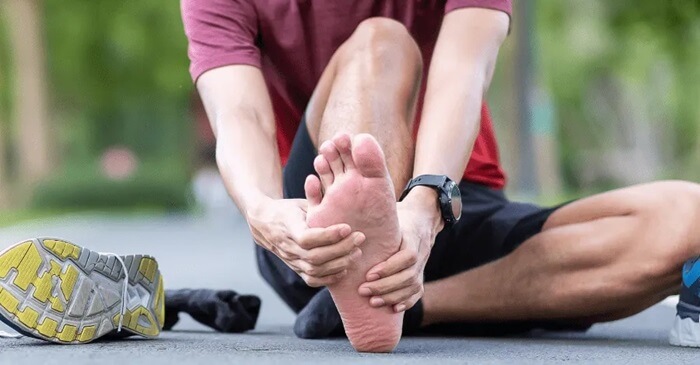
Causes Of Foot Pain Walking
Let's start by having a look at the most common causes of foot pain while walking.
1. Plantar Fasciitis
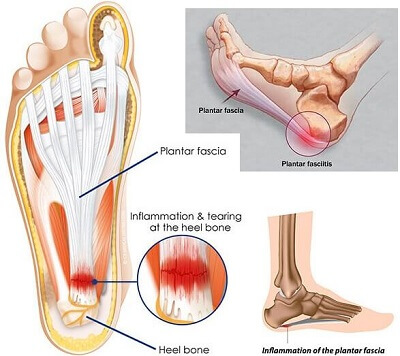
Plantar fasciitis is one of the most common causes of foot pain when walking, usually focused underneath the heel bone or in the foot arch.
Plantar fasciitis is caused by damage and inflammation of the plantar fascia, a thick band of tissue underneath your foot that connects your heel bone to your toes, supporting the foot arches.
Plantar fasciitis is usually caused by overuse, muscle tightness, improper footwear, or abnormal foot mechanics such as flat feet or high arches. Sudden increases in activity levels, such as beginning a new training program, can also trigger plantar fasciitis. It is most common in people aged 40-60.
The hallmark symptom of plantar fasciitis is a sharp, stabbing pain under the foot when you walk, typically worse first thing in the morning or after prolonged periods of inactivity. The first few steps when you get up can be excruciating with immediate, sharp foot pain while walking. The pain usually decreases gradually with movement as the foot loosens up but may return after long periods of standing or walking.
Find Out More: Plantar Fasciitis
2. Morton’s Neuroma
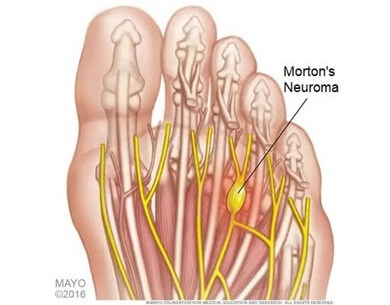
Morton’s neuroma is a painful condition causing ball of the foot pain when walking, usually between the third and fourth toes. It occurs when the tissue surrounding one of the nerves thickens, leading to nerve irritation.
Wearing high heels, tight shoes, or engaging in high-impact activities like running can cause Morton’s neuroma. Flat feet or high arches may also contribute to the condition by putting extra pressure on the nerves.
Common symptoms include sharp, burning pain in the ball of the foot when walking, often accompanied by numbness or tingling in the toes. Some people describe the feeling as if they are walking on a pebble and can feel a lump underneath their foot.
Find Out More: Morton’s Neuroma
3. Metatarsalgia
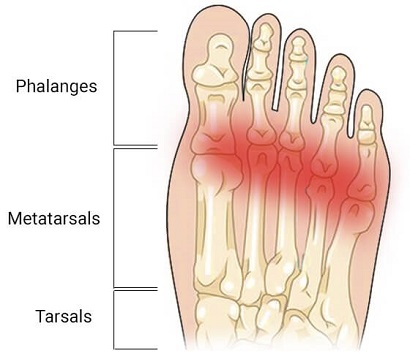
Another possible cause of pain under foot when walking is metatarsalgia.
Metatarsalgia refers to pain and inflammation in the ball of the foot, usually due to overuse or excess pressure on the metatarsal bones.
Common causes include wearing tight-fitting shoes, engaging in high-impact activities like running or jumping, or having foot deformities such as bunions or hammertoes. High arches or flat feet can also contribute to the development of metatarsalgia as can muscle weakness and tightness.
Symptoms of metatarsalgia include a sharp, burning, or aching pain in the ball of the foot, particularly when standing, walking, or running. The pain often worsens with activity and improves with rest.
Find Out More: Metatarsalgia
4. Tendonitis
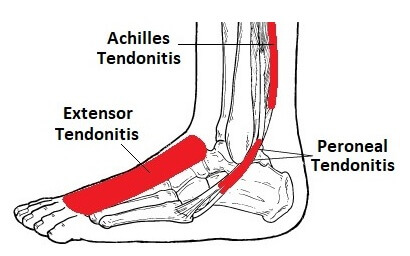
If your feet hurt when walking, it could be a sign of tendonitis.
This is when there is inflammation or irritation of one of the foot tendons, usually from overuse. Tendons are thick rope-like bands that connect muscles to bones.
Foot and ankle tendonitis is typically caused by repetitive stress and overuse, such as running or jumping, or altered foot biomechanics. Muscle weakness and tightness, suddenly increasing activity levels, previous foot injuries and various medical conditions can increase the risk of developing foot tendonitis.
Symptoms include pain and stiffness in the affected tendon, swelling, and difficulty moving the foot, particularly after rest or first thing in the morning. The location of your foot pain when walking will vary depending on which tendon is affected.
- Achilles Tendonitis: causes calf and heel pain when walking
- Peroneal Tendonitis: causes outer foot pain walking, near the ankle
- Posterior Tibial Tendonitis: causes inner side foot pain while walking, particularly as you push off
- Extensor Tendonitis: causes top of foot pain walking, particularly when wearing shoes
- Anterior Tibial Tendonitis: causes front ankle pain walking, particularly on sloped surfaces
Find Out More: Foot & Ankle Tendonitis
5. Heel Pad Syndrome
Pain underneath the heel when walking may be due to heel pad syndrome. Irritation of the fat pad that cushions the heel can lead to a bruise-like pain in the centre of the heel that gets worse when walking, particularly barefoot or on hard ground.
Repetitive loading through the heel, e.g. running and jumping causes irritation and thinning of the heel pad which leads to pain.
Find Out More: Heel Pad Syndrome
6. Bunions
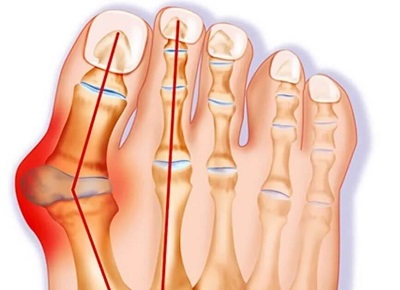
A common cause of foot pain while walking focused around the big toe is a bunion, aka hallux valgus.
A bunion is a bony bump that forms on the joint at the base of the big toe, causing the toe to lean inwards toward the other toes.
Bunions are often caused by wearing tight or narrow shoes, particularly high heels, though they can also result from foot deformities, arthritis, or genetic factors. Bunion pain in the foot when walking develops gradually over time due to pressure on the big toe joint.
Bunions cause swelling, pain, and tenderness at the base of the big toe, often accompanied by redness and restricted movement. A hard lump forms on the side of the big toe and the toe may point inwards. There is usually an increase in bunion foot pain when walking or running, particularly when wearing tight shoes.
Find Out More: Foot Bunions
7. Stress Fractures
If your foot hurts when walking and you have recently increased your activity levels, you may have a stress fracture. A stress fracture is a small crack in a bone, usually caused by repetitive stress or overuse. Foot stress fractures often occur in the metatarsals or the heel bone.
Stress fractures are commonly caused by overuse, especially in high-impact sports like running or basketball. Sudden increases in activity, improper footwear, and bone weakness from conditions like osteoporosis can contribute to stress fractures.
The main symptom of foot stress fractures is localized pain that worsens with activity and improves with rest. Swelling, bruising, and tenderness may also occur around the affected area. Stress fractures are the most common cause of foot pain when walking in children/adolescents.
Find Out More: Foot Stress Fractures
8. Bone Spurs
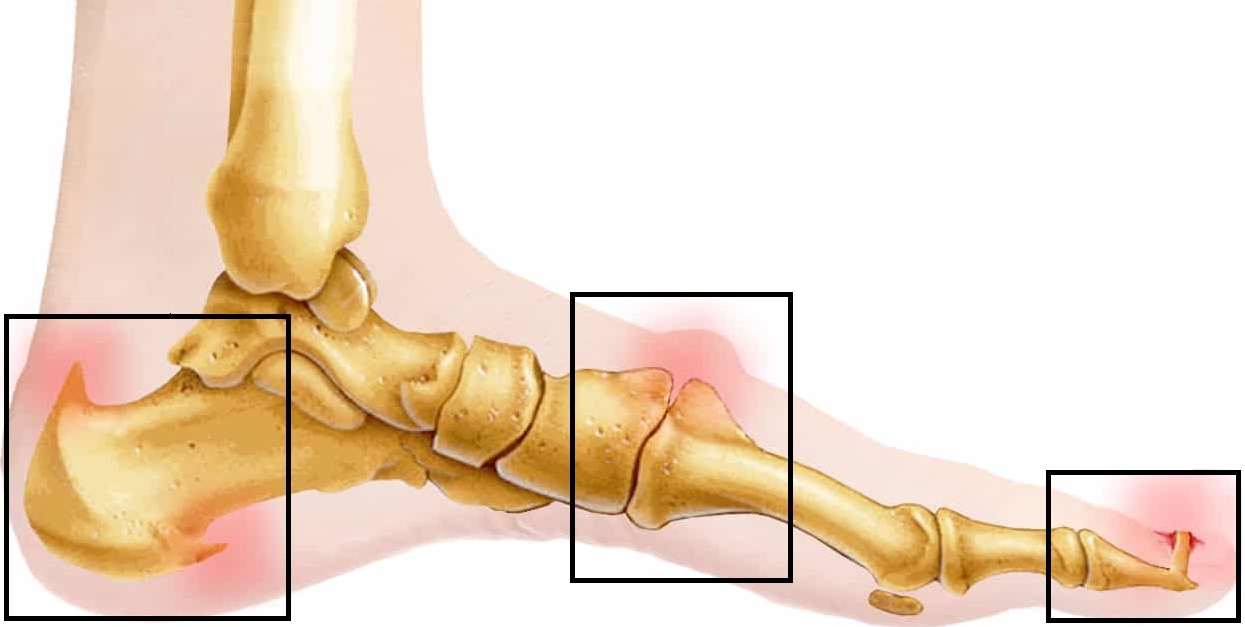
If you get sharp, stabbing foot pain when walking initially that settles to an ongoing ache, you may have a bone spur.
Bone spurs are bony projections that form along the edges of bones, often in the heel or toes.
Bone spurs develop in response to soft tissue tightness, pressure, friction, or stress over a long period of time. Conditions like arthritis or plantar fasciitis, or previous foot injuries can also lead to bone spur formation.
Foot bone spur symptoms include pain, swelling, and stiffness around the affected joint. You may even be able to feel a hard lump, depending on where the spur forms. Heel bone spurs can cause a sharp pain in the foot when walking or standing.
Find Out More: Foot Bone Spurs
9. Bursitis
If your foot pain when walking is associated with a localised pocket of swelling, you may have foot bursitis. Bursitis is the inflammation of one of the bursae, small fluid-filled sacs that cushion the bones, tendons, and muscles near joints. Foot bursitis commonly develops at the heel or in the ball of the foot.
Bursitis is usually caused by repetitive motion or pressure, such as excessive walking, running, or wearing shoes that cause friction. It can also result from trauma or injury to the foot as well as muscle tightness or bone spurs.
Symptoms of foot bursitis include localized swelling, pain, and tenderness, often near the heel or in the ball of the foot. The pain may worsen with movement or pressure, and you may notice your foot pain while walking is worse if you are wearing shoes rather than when barefoot.
Find Out More: Foot Bursitis
10. Sesamoiditis
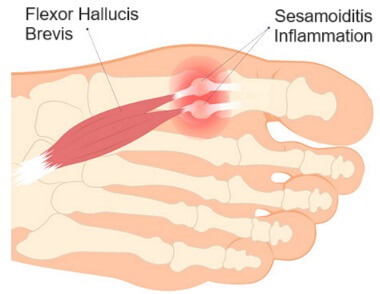
If your foot pain when walking came on gradually and is focused underneath your big toe with no obvious deformity, it is likely to be from Sesamoiditis.
Sesamoiditis is the inflammation of the sesamoid bones, two small bones embedded in the tendons beneath the big toe.
Sesamoiditis is typically caused by overuse, particularly in activities that involve pushing off the toes, such as running or dancing. Wearing high heels or shoes with inadequate cushioning can also contribute. Abnormal foot biomechanics or previous foot trauma can also increase the risk of developing sesamoiditis.
Common symptoms include pain and tenderness under the ball of the foot and big toe, swelling, and big toe stiffness. Sesamoiditis foot pain while walking is usually worse when pushing off through the toes due to the force going through the sesamoids, particularly if you’re wearing tight shoes.
Find Out More: Sesamoiditis
11. Plantar Fibromatosis
If you get arch pain in the foot when walking and have noticed a small lump underneath your foot, you probably have plantar fibromatosis.
Plantar fibromatosis is a condition in which benign, fibrous nodules form in the plantar fascia, the tissue that runs along the bottom of the foot.
The exact cause of plantar fibromatosis is unknown, but it may be linked to genetic factors, trauma, medical conditions e.g. diabetes or repeated stress on the foot.
Plantar fibromatosis causes firm lumps or nodules to form on the bottom of the foot, which can cause discomfort or pain when walking or standing, particularly if the nodules grow larger. Usually, the nodules appear some time before you noticing your feet hurt when walking.
Find Out More: Plantar Fibromatosis
Rare Causes Of Foot Pain While Walking
Some of the more rare causes of foot pain when walking include:
- Cuboid Syndrome: outer pain in foot when walking that often causes you to limp due to a partial dislocation
- Sinus Tarsi Syndrome: deep outer foot pain while walking with instability, often following an ankle sprain
- Accessory Navicular: inner foot pain after walking caused by an extra piece of bone in the medial foot arch
- Os Trigonum: heel pain when walking on the foot caused by an extra bone in the back of the ankle joint
- Tarsal Coalition: stiffness and foot pain walking below the ankle due to abnormal bone fusion
- Tarsal Tunnel Syndrome: shooting or burning pain in the bottom of the foot, often associated with tingling or numbness from nerve irritation
- Jones Fracture: fracture in zone 2 of the fifth metatarsal, usually following a twisting injury when the foot is flexed
Differential Diagnosis
If your feet hurt when walking, it can help to think about the specific location and type of pain you are getting to work out what is wrong:
- Pain Under Foot When Walking: plantar fasciitis, morton's neuroma, metatarsalgia, plantar fibromatosis
- Side Foot Pain When Walking: peroneal tendonitis, posterior tibial tendonitis, Jones fracture
- Pain In Toes When Walking: metatarsalgia, sesamoiditis, bunions
- Top Foot Pain Walking: extensor tendonitis, anterior tibial tendonitis
- Foot Heel Pain When Walking: plantar fasciitis, achilles tendonitis, heel bone spur, heel bursitis, heel pad syndrome
- Foot Pain Only When Walking: stress fractures
- Sharp Foot Pain While Walking: plantar fasciitis, morton's neuroma, metatarsalgia, foot tendonitis, bone spurs
- Feet Swollen After Walking: stress fractures
#CommissionEarned from Amazon on qualifying purchases
Treating Foot Pain When Walking
Treatment for pain in the foot when walking will vary depending on the underlying cause of the pain but may involve the following:
- Rest: avoid activities that cause pain to give the foot time to heal, particularly activities that put a lot of pressure through the foot, such as running and jumping
- Ice: regularly applying ice packs to the affected area can really help to reduce foot pain after walking
- Footwear: wear wide-fitting, cushioned shoes e.g. Sketchers. Definitely avoid any high heels, or tight fitting, pointy shoes
- Orthotics: there are various orthotics that can help to reduce foot pain when walking by correcting foot position or providing cushioning to off-load the affected area
- Exercises: Muscle weakness and tightness often contributes to foot pain while walking so doing stretches and strengthening exercises can make a big difference
- Physical Therapy: a physical therapist can develop a rehab program for you, and may use manual techniques or electrotherapy
- Injections: corticosteroid injections can help to reduce pain and inflammation
- Medication: if your feet hurt when walking you may benefit from taking painkillers e.g. paracetamol/Tylenol or non-steroidal anti-inflammatories e.g. ibuprofen/Advil – always check with your doctor first
- Surgery: if your foot pain walking fails to settle with conservative treatment, your doctor may advise surgery, but this is rare.
You can find out more about the best treatments for the specific causes of foot pain when walking using the links to each condition above.
Foot Pain Walking Summary
Foot pain when walking can arise from a variety of conditions, each with distinct causes, symptoms, and treatment options. Proper diagnosis is essential for addressing the root cause of your pain, so if you're experiencing persistent discomfort, it's important to consult with a healthcare provider to develop an appropriate treatment plan.
Most of these conditions can be managed with conservative treatments like rest, proper footwear, and physical therapy, but early intervention is key to preventing long-term complications.
You may also be interested in the following articles:
- Top Of Foot Pain
- Foot Arch Pain
- Outer Foot Pain
- Inner Foot Pain
- Toe Pain
- Foot Lumps & Bumps
- Foot Pain In The Morning
Related Articles
Page Last Updated: 27th November, 2025
Next Review Due: 27th November, 2027
